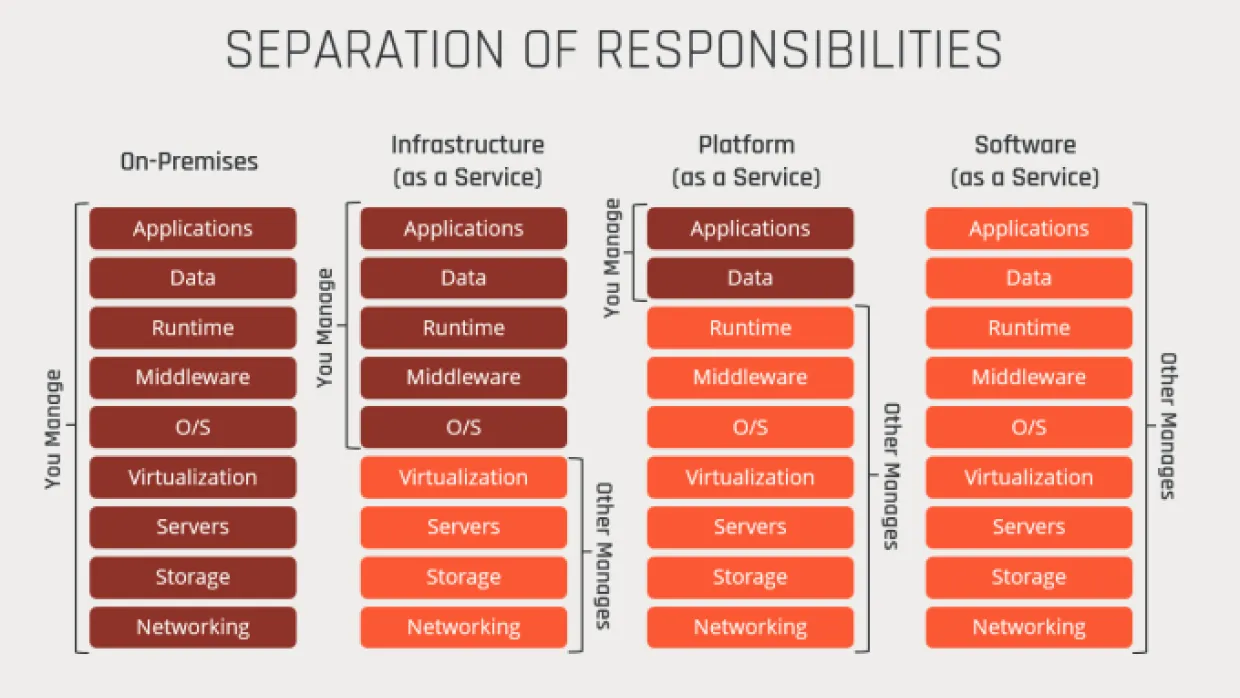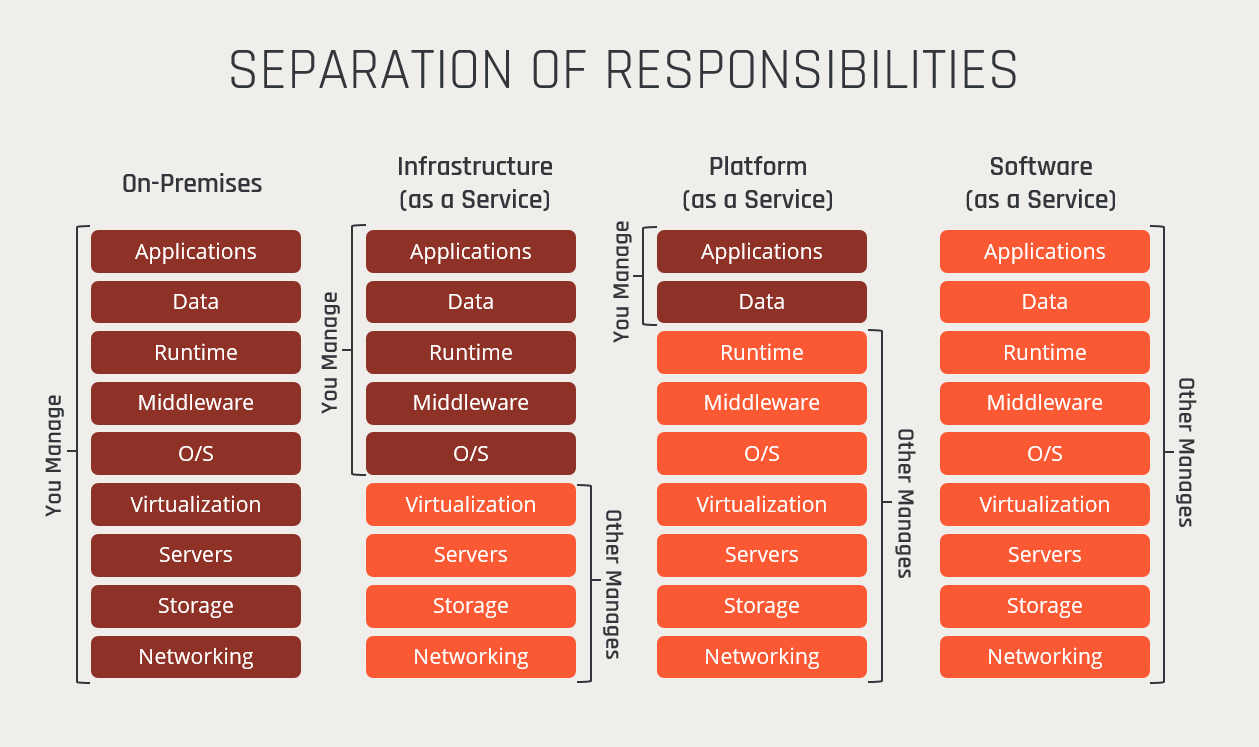Sitecore for Developers
Sitecore in the Cloud for Dummies (…and Marketers)

OK, so you’re a digital marketer… not a technologist. Your IT team keeps talking about “cloud migration,” and you don’t want to be the only one with a blank face in the meeting. We’re here for you! This Q&A with HI’s Dave Michela & Paul Hassinger gives you just enough information to be dangerous, without veering too far into geek-speak.Q: What’s a cloud, anyway?Simply put, a cloud is a place where you can store and operate software. Once upon a time, if your company bought Sitecore, they would also buy servers from which to run Sitecore. Your IT team was responsible for installing and maintaining that hardware, and installing and maintaining the Sitecore software on those servers.You can still do that. It’s called “on-premise.” But IT now has the option to offload some or all of the work by moving Sitecore to a cloud: a place where someone else owns and manages the hardware. Popular cloud providers include Amazon (Amazon Web Services or AWS); Microsoft (MS Azure) and Google (Google Cloud Platform or GCP).Q: Why should I, a marketer, care about where IT puts our Sitecore software?There are a few different flavors of cloud, and they can bring benefits to digital marketers in the form of faster time to market; improved reliability, stability & performance; reduced operational costs and scaling. You can choose the flavor that makes the most sense for your business needs and your operational model.Q: Hmmm… What are these different flavors of cloud…?We’ll talk about four flavors: On-premise; Infrastructure as a Service (IaaS); Platform as a Service (PaaS) and Software as a Service (SaaS). Let’s use the analogy of an apartment building to understand the differences. The building is our “infrastructure” (servers, etc. that you need to operate software) and the software itself resides in one of the apartments.
- On-premise: You build, manage and maintain the apartment building yourself. You are 100% responsible for its operations, everything in it and everything that might go wrong with it.
- Infrastructure as a Service (IaaS): You rent an empty apartment in someone else’s building, and put your Sitecore software in it. Your landlord is responsible for maintaining the building: making sure the plumbing and heat works, etc. But you own everything in your apartment (your Sitecore software) and are responsible for taking care of it.
- Platform as a Service (PaaS): You rent a fully furnished apartment. Everything you need is right there from the minute you get the keys. You can rearrange some things to suit yourself and add some personal touches as needed.
- Software as a Service (SaaS): You rent a fully furnished apartment, complete with a personal chef, maid, security system and maintenance service. Everything is done for you. The good life, huh? Well, yes, but say you want to change the paint color on the walls or switch out the kitchen faucet – it’s likely not possible.

Sitecore can operate in the first three flavors; there is no SaaS flavor of Sitecore today. The latest versions of Sitecore are well-equipped for PaaS, and Azure PaaS in particular. Moving to a PaaS model comes with some powerful bells and whistles for marketers.Q: OK, what bells and whistles does a PaaS model provide? Time to market, for one thing. Back in the day, when you bought Sitecore you would also have to buy, and install servers, then install the software on the servers, connect the databases, do some configuring and a bunch of other tasks before you could even start building a new website. With PaaS, many of those steps have been automated. It’s not *quite* one-click setup, but it’s getting close. This means you can start your creative ideation sooner and bring your new website(s) to market faster.Scalability is another huge benefit: Is your business seasonal? Say you’re a retailer with huge traffic growth over the holidays. Or a tax preparer where your April traffic is 100x the rest of the year. Or a news organization whose visits spike during breaking news and weather events. With PaaS, your Sitecore footprint can automatically scale up to handle those huge traffic spikes, then shrink back when things settle down. Why is this important? It gives you peace of mind that your technology can handle the load, no matter what. Your site will be there when your users want it most. And you only pay for what you use, so you don’t rack up huge hosting bills at slower times of year.Q: Sounds great, so how do I choose what cloud provider to use?You can put Sitecore pretty much anywhere. But some clouds offer different options than others:AWS (Amazon Web Services) is the most mature cloud hosting solution. They are the market share leader in IaaS and have the largest range of service offerings across all technologies. AWS is developer- friendly and a solid choice for a variety of large enterprises. But as far as Sitecore is concerned, AWS only offers IaaS. So the bells and whistles that come with PaaS aren’t available on AWS.Google Cloud Platform (GCP) is third in market share, but growing. Their focus has been primarily on enormous cloud computing capabilities: artificial intelligence and other “big data” applications. We don’t see many instances of Sitecore running on GCP. Not because it doesn’t work; because Google’s focus has been on other kinds of applications.That leaves Microsoft Azure among the big players. It’s an obvious choice for Sitecore, since Sitecore is built around Microsoft’s .NET standards. That connection has led to a lot of investment on both sides to ensure that Azure includes features tailor-made for Sitecore, and vice-versa.Azure is still relatively new, and its PaaS offering for Sitecore is even newer. Historically, if you put Sitecore in Azure you needed to go the IaaS route, or create a hybrid IaaS-PaaS architecture. We won’t bore you with the details. Now, however, Sitecore and Azure PaaS play very nicely together, and it’s quickly becoming the preferred combo for new Sitecore clients, and existing Sitecore clients who are making a migration to the cloud.In addition to the PaaS benefits we addressed earlier (time to market, scalability, etc.), marketers in highly regulated industries will be glad to know that Azure has a very solid compliance offering. If you’re in government, financial services or health care, for example, your legal and compliance people will be pretty happy.Q: Sounds too good to be true…? Let’s say it’s not perfect. PaaS is, by nature, a “multi-tenant” model. This means that your Sitecore instance and code base could be sitting right alongside a competitor’s, or anyone else’s for that matter. This does raise eyebrows for many clients, particularly large enterprises and/or highly regulated businesses.Fortunately, there’s a way around it: Azure’s “App Service Environment” (ASE) allows you to wall off your Sitecore implementation from the rest of the cloud – it’s like your own private little cloud VIP room. The primary drawback here is cost – this approach can get spendy. Also, since an ASE is dedicated for you, it may take longer in setting things up since it isn’t re-using shared resources.Other drawbacks: Azure’s search capability (used by content managers and developers when making changes on your site) is still relatively immature. But it’s growing up fast. And the pre-built templates that accelerate your initial Sitecore launch on Azure PaaS are also relatively basic: this is why there’s still no true “one-click” installation. (It’s still a lot faster than the old-school way of doing things.)Q: Got it. So now what? Partner with your IT team. While Azure PaaS may seem like the obvious solution for Sitecore, you have to think about your broader enterprise IT strategy. (If all the rest of your applications are in AWS, it might not make sense to isolate Sitecore in Azure.) And of course, cloud migration in general raises questions about how you operate your systems, day-in and day-out.We help clients navigate this space every day. We’re happy to answer any questions you have as you consider your options and the best path forward, or if you just want a better, non-technical understanding of cloud options. Get it touch at askHI@horizontalintegration.comChart above adapted from: http://robertgreiner.com/2014/03/windows-azure-iaas-paas-saas-overview/